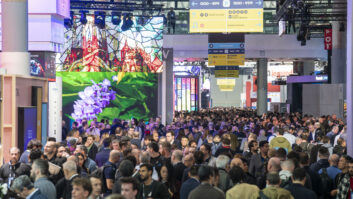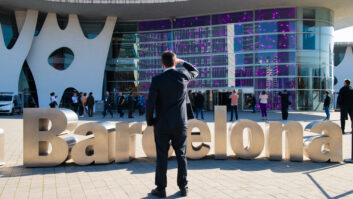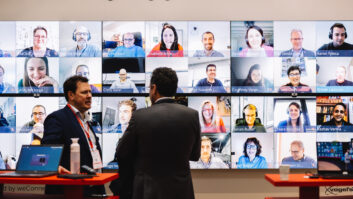In an always-connected digital age where people seem glued to smartphones and autos will soon boast 300-plus chips, it’s ironic that most buildings still run manually.
Their important functional systems (power, plumbing, HVAC) are serviced and controlled by paper; by blueprints, diagrams, construction documents, maintenance records, and other paper documents (and a few spreadsheets and software tools).
Left unconnected with online, most buildings live digitally challenged existences, trapped in the commercial real estate’s equivalent of a digital divide. These buildings are dumb, expensive to run, dysfunctional and, if not dangerous, at least unhealthy.
Buildings must get smart if society is to get sustainable. Yet, in discussing smart buildings for ten years at ISE’s Smart Building Conference, clearly the biggest impediment is reluctance by investors, building owners and construction companies to embrace the longer term savings of digital transformation at the expense of upfront investment.
Along comes the pandemic, and the world changes. Buildings become empty, work-from-home becomes the mainstay not the exception, and once-popular huddle rooms become potential death traps.
You might think the smart building industry would suffer greatly from this, but it didn’t. While smart building sales took the same hit the economy did in 2020, investments in smart building technology increased. In the same way Covid-19 accelerated remote working trends, the pandemic put smart building technology in the fast lane. Maybe absence does make the heart grow fonder, or maybe nothing clears a building owner’s mind as much as an empty building.
When Covid-19 closed offices, public buildings, and shops, those without any form of building management system were forced to physically visit sites periodically to check lighting, climate control systems, and CCTV systems, potentially risking their own health with each trip. Some dumb buildings were forced for weeks to heat and light buildings despite being empty of staff.
Those with a building management system in place could control essential functions remotely, solving and managing any issue flagged by smart systems.
The value of smart buildings didn’t stop at environmental management and security. Owners learned smart building solutions could support applications to monitor and manage the threat of coronavirus.
Through smart building technologies, we can safely monitor and manage access, social distancing and health screening within buildings. Indoor air quality (IAQ) became a top priority; and those with smart buildings found sensors and systems already monitoring air.
As the world contemplated how work itself might change, how workplace and workspace both must adapt to meet pandemic and post-pandemic conditions, smart buildings were generally prepared to accommodate a remote workforce.
While the building industry stuck to its notion that buildings are fixed shells for inhabitants, forward-looking companies that had designed and built structures with smart systems proved their value to their occupants and owners during the pandemic.
Smart buildings fared better than dumb buildings. And yet most were designed pre-pandemic; the next generation of smart buildings will only get better.
As an example of a modern smart building, consider Intel’s PTK1 in Israel. The building occupies 75,000 sq m (of which 35,000 sq m are below ground) and hosts 2,000 people (capacity is 2,700). There are 2,700 ergonomic workstations; 143 meeting rooms, video rooms and collaboration rooms; six training rooms, and 198 spaces offer alternative work environments for individuals, two workers, or teams.
The building sports an LED screen on the outside and some 500 displays and tablets available across the building and the meeting rooms. Fifty 3D cameras cover the lobby.
PTK1 generates up to 100 terabytes of building info each day. Its ‘system-of-systems’ includes 970 APIs and 60,000 input fields; 14,000 sensors monitor lighting, temperature and occupancy; and cabling runs some 1,900 km. Intel says energy efficiency is 40 per cent higher than a normal office building, the water systems consume 75 per cent less water, and all the building’s power is provided by renewable sources.
PTK1 was designed three years before the pandemic: we’ve only begun to explore what we can do with the newest smart building technologies such as IoT and AI.
While sensors have been around for a while, the internet of things (IoT) platforms have become more sophisticated and include pandemic features. IoT emerges as an essential smart building technology; able to gather data by sensors and process real-time info at the network’s edge, making buildings not only smarter but safer.
Artificial intelligence (AI) is only at the beginning, expected to play a role in fault prediction and prevention, alarms and security. AI can monitor water quality, determine when rooms need cleaning, or guide visitors’ cars towards parking spaces.
For example, IBM’s Watson Works addresses the challenges of returning to the workplace by managing facilities and optimising space allocation using real-time solutions including Wi-Fi, cameras, bluetooth beacons and mobile phones. This data, collected in a way to preserve employees’ privacy, enables managers to quickly reallocate spaces, designate no-go zones, arrange for cleaning and monitor crowding, social distancing and mask-wearing.
The pandemic sets the stage for a significant wave of disruption in the smart building systems arena. New software technologies will leverage diverse data to unlock new operating values and user experiences for owners, occupants, and equipment suppliers.







